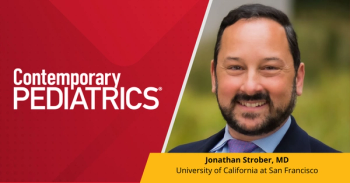
Is there room for improvement in neuroimage use in suspected abuse cases in infants?
When an infant presents with fractures that suggest possible abuse, but appears to be neurologically fine, clinicians should make sure to rule out occult head injury. A report looks at whether many children’s hospitals are routinely following this guidance.
Fractures in an infant often raise concerns of abuse, but if the child appears to be neurologically well, there’s an increased risk of clinically occult head injury. An
Investigators included infants who had a femur fracture, a humerus fracture, or both that underwent an evaluation for abuse at 44 US children’s hospitals in the Pediatric Health Information System from January 2016 to March 2020, which included inpatient, observational, and emergency department encounters. The infants were aged younger than 12 months with a fracture that did not have overt signs or symptoms of a head injury. They excluded any infant who had billing codes that suggested overt neurologic symptoms. Computed tomography and magnetic resonance imaging scans were the neuroimaging forms examined.
The cohort included 2585 infants with fracture who were given abuse evaluations, of which 1726 were publicly insured and 1549 had neuroimaging performed. The median age was 6.1 months. Following multivariable analysis, the investigators found that payer type (odds ratio [OR] for public vs private insurance, 1.48; 95% CI, 1.18-1.85; P = .003), younger age (OR for ages <3 months vs ages 9 to <12 months, 13.2; 95% CI, 9.54-18.2; P < .001), fracture type (OR for femur and humerus fracture vs isolated femur fracture, 5.36; 95% CI, 2.11-13.6; P = .002), and the hospital (adjusted range in use of neuroimaging, 37.4% [95% CI 21.4%-53.5%] to 83.6% [95% CI 69.6%-97.5%]; P < .001) were tied to increased use of neuroimaging. However, race and ethnicity was not linked to increased use. Furthermore, infants insured publicly were more likely to be given neuroimaging(62.0%; 95% CI, 60.0%-64.1%) than those that were privately insured (55.1%; 95% CI, 51.8%-58.4%) (P = .001).
The investigators concluded that there was variation in hospitals’ neuroimaging practices. They believe that the findings suggest that bridging the noted gaps could be an important opportunity for quality, safety, and equity improvement.
Reference
1. Henry M, Schilling S, Shults J, et al. Practice Variation in Use of Neuroimaging Among Infants With Concern for Abuse Treated in Children’s Hospitals. JAMA Netw Open. 2022;5(4):e225005. doi:10.1001/jamanetworkopen.2022.5005
Newsletter
Access practical, evidence-based guidance to support better care for our youngest patients. Join our email list for the latest clinical updates.








